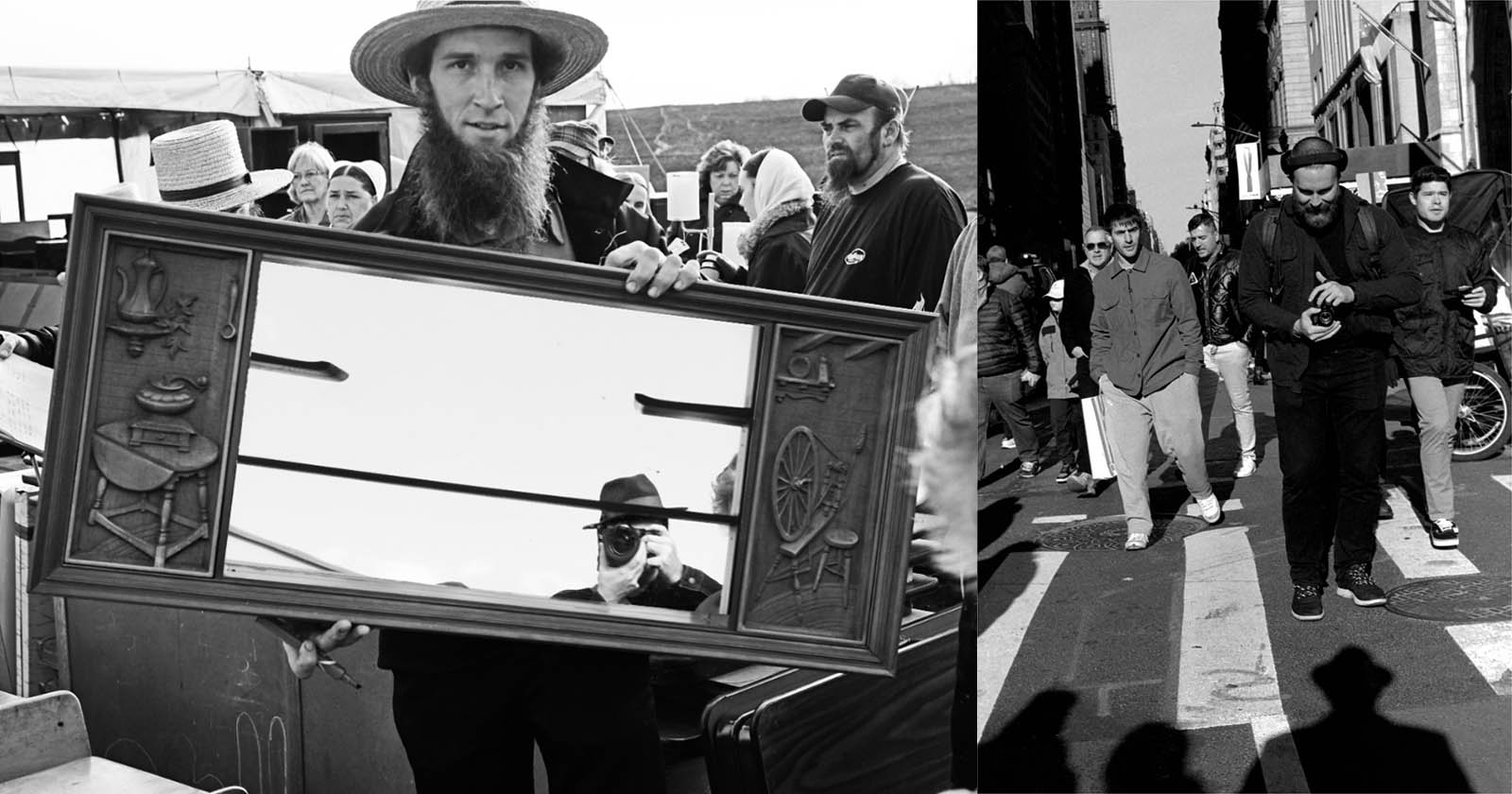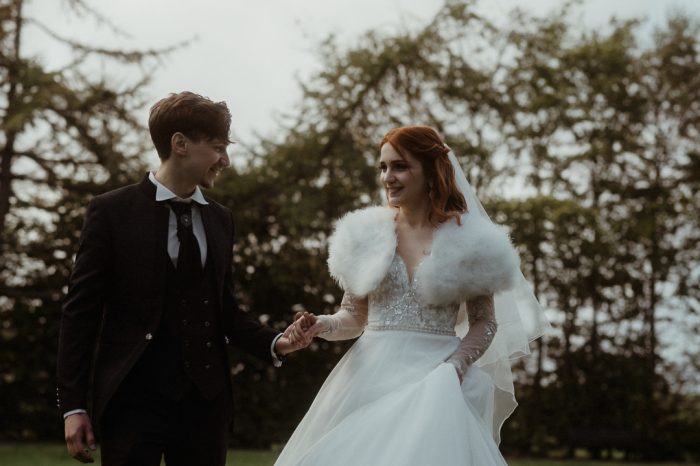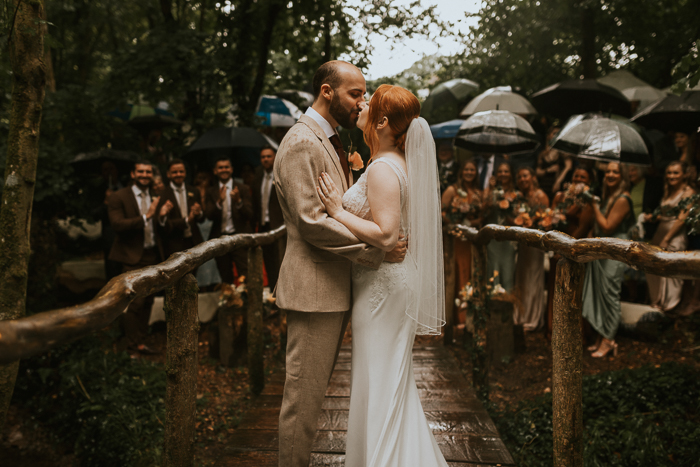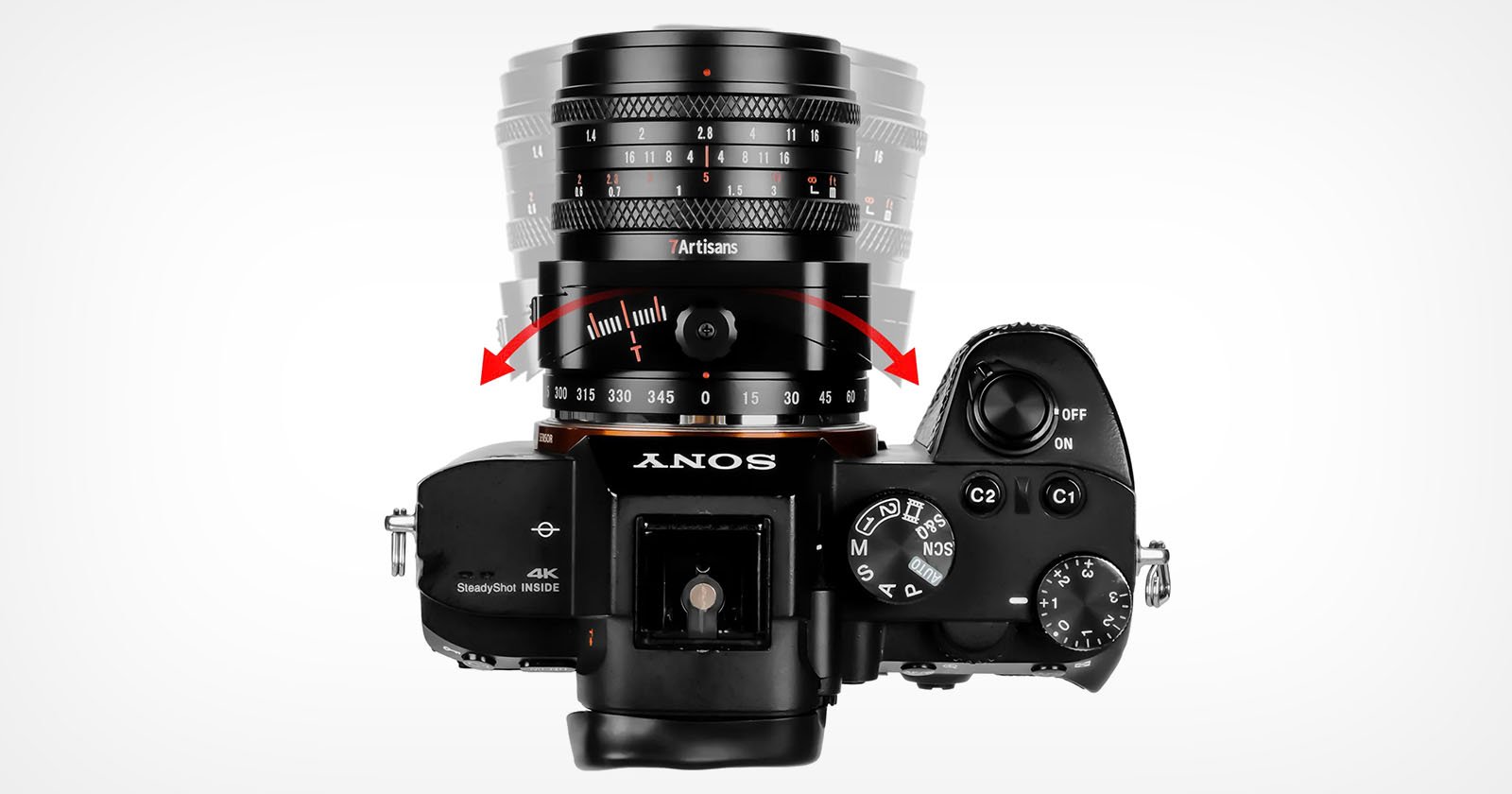
![]()
It begins in a specific place, and on a specific date: a country auction. March 26th. While I’m holding up a camera and looking for my one daily photograph, an Amish man swings the mirror he’s offering up to the highest bidder and briefly —for no more than a second— shows me… myself. And there it was: suddenly, I was Narcissus on the plains.
So began a Spring of self-loathing. I don’t tend to like what I see.
Editor’s note: In what has become a year-end PetaPixel tradition, photographic artist B.A. Van Sise—who has the unusual practice of making one, and only one, photograph on film every single day— looks back on the past year and towards the next. His previous entries can be found for 2018, 2019, 2020, and 2021. More images from this series, titled The Infinite Present, can be seen on the artist’s website.
![]()
![]()
![]()
![]()
Blissfully unblessed by beauty, it’s easy to throw out the old saw that (like many photographers) I hate being photographed. It’s an easy hate to hold onto. And it’s an easy lie to tell: after all, almost every photograph that almost every photographer makes shows everyone in it but the one making it: the photographer is the only person these days who doesn’t live in front of the camera, who does not need to feign love or a smile, doesn’t age in front of the lens to chronicle their wrinkles year over year, to be increasingly saddled by reminders of their finite time.
But still, every photograph contains the photographer, and all photographers – claiming they hate to be photographed – are liars. Not long after my millisecond encounter with that winsome yet anonymous Pennsylvania German, I ended up conducting (within a week of each other, no less) two separate workshops on ekphrastic poetry at the New York Public Library and then at the STAC program for artistically gifted teens in Herricks, New York. Ekphrasis is the practice of writing poems inspired by images one sees, so for the first we used government propaganda photographs from the 1950s; for the latter, my own images from this very PetaPixel series the year before. [If you’ve never had the chance to be excoriated by the youthful future, I highly recommend it; it’s a luxury most are afforded only in the unhearing slumber of the grave.]
![]()
![]()
![]()
![]()
There’s a reason for this: poetry and photography have more in common than any two other art forms, because both require presence. The photographer must be physically present to make the photograph; the poet must be emotionally present in their own lives to make the poem. For the photographer, presence is the only requirement. The old canard tells us f/8 and be there. but in reality, the f/8 is fungible. Being there is all there is: you can no more live as a photographer over your computer than you can, well, live as anything else. Fictional poetry – with my apologies to the fictional poets out there hammering away at their imaginary typewriters – never really works.
Both workshop groups – at very different stages in their lives – jumped immediately to the idea that their presence in the image was that of the photographer. Both groups understood, intrinsically, that the photograph made a long journey to arrival in the “arbitrary” selection of angle, of moment, of editing, of narrative, of presentation, of the passing of time. Both groups understood, deeply, that the honest photographer, even in their best, like the honest poet, even in their best, lies. And both groups understood, in the amber of their marrow, that every photograph contains all the people you do see as well as the one you don’t: the one who made it.
![]()
![]()
![]()
![]()
A particle physicist can tell you all about the Observer Principle: that the act of observing disturbs the observed. They’re talking about electrons and photons, but the idea holds: the gaze of the person in the photograph is often the gaze of the seen. When the lens sees them, they watch the lens and lensman both. They become an artifact and the photographer becomes, if they’re lucky, a photograph. A photograph is not a moment, but a choice, not a record but a presentation. It is not a memory, but a perception of memory.
![]()
![]()
![]()
![]()
This year’s reflection was breathed into being the moment that Amish man swung his mirror. There are plenty of clichés about how photography is a sin: the theft of a soul, the burglary of one part of the life of another. If a photograph can be a sin, that one – of a man whose very religion does not allow for photography, surely that a gravely graven image – fits the bill. But it’s also a photograph of yet another – a person whose religion is photography.
![]()
![]()
![]()
![]()
Now, almost all of my photographs are of strangers who have no idea what life the perception of their memory grows into; I, like you, live in a changing world in which every stranger I meet is, perhaps, a bit stranger than the one before and who, unknowingly, defines and redefines my own body of work. I make my perceptions of memory, like many photographers, in the hopes of making something poetic, to show it to new eyes. But also –like everybody else, I hope– to put something of myself in it.
![]()
![]()
![]()
![]()
The meaning, and importance, of the self-portrait has evolved. While the arrival of a camera in the pants pocket of almost everyone in the world has dramatically decreased the number of claimed sightings of yetis and aliens, it’s given rise to something just as likely to cause late-night anxiety: other people’s selfies. We now inhabit a world where most people make a picture of themselves every day: epigones, always, of their makers. These are the self-portraits we see, but what about all the others that we feel? All art is autobiographical, and if we hold that photography is an art then every photograph is a self-portrait and fitting that every photograph – from the selfie on down – is a lie. We live, after all, in a lying time; in the year 2022, the most searched thing on Google was the daily solution to Wordle puzzle that people of every geography, ethnicity, gender and politic might finally find something to unite them: pretending on social media to have finished it quickly. The year’s back forty was occupied deeply by conversations around the missile-like rise in image making by ‘artificial intelligence’ (which is, of course, neither artificial nor all that intelligent.) What did most people do first, before anything else? They dashed to make pictures of themselves. I – and I suppose this is telling – immediately ran to use it to generate photographs “in the style of B.A. Van Sise”, which birthed into being a host of photographs I didn’t make, of strangers I’d never met, but which felt, well, alarmingly plausible. It’s a bit hard to tell who, in the future, will become the éminence grise of our own work; the photographer will be present, now, even in the pictures they don’t make.
But still, we make them. We make photographs or, in Amish markets, even dare to take them. We write poems. We compose songs. We create selfies. Your own photographs, like your own children, always look a little more handsome because, if nothing else, they are yours and of you made. They reflect what you love most.
![]()
![]()
![]()
![]()
For some, it’s in the journey. for others, their love. their hobby. It might be the hand to hold. the book you read, the movie you see. We may write – because the photograph is, in the very Greek of it, the writing of light – of the long draw of a cigarette, the heavy clink of ice in the glass, the thrill of climax. What we write about can be all the vicious vices, or the fast cut of dawn as it cracks across the field and lets you know you’ve survived another night. The photographs you take can be made of all the theft that exhilarates: the shoplifted trinket, the Amish marketman, the feeling that swells in your ribcage listening to the frantic ambulance as it screams by knowing that you are on the outside of it. Anything you love, anything you fear can be elevated, swiftly, to perceptions of memory.
And here we are: it is the time for new time, time for the photographer and the poet to start new annual capsules: records that they existed, that they saw and were seen, that they were regarded by others. That for a brief moment of an otherwise unregarded, unrenowned life, they observed and disturbed the observed, that they created an image, of themselves, in others. Narcissus, after all, fell in love with his reflection but also this: proof that he exists, that there is not just the world he observes, but that he is also part of that world. The trick to making a good photograph is to make any photograph and wait fifty years. After all, to make the photograph is to be nostalgic for the future, to invest in a time when the perceptions of memories become more valuable – and more rare – than memory itself.
![]()
![]()
![]()
![]()
And soon comes a new year, the first of so very many. A chance for the image-makers and storytellers to leave our spoors for others to find, a new avenue to make the unseen future heirs to ourselves. An opportunity to meet new strangers, encounter new lives, and let them change your autobiography. Let them hold on -even if just for a moment – to your reflection. Our world is changing – in some ways back to the old, in some ways into the new. It feels, of late, that time is wending back from its restrained gait to its old gallop. How the hell are we now entering 2023, when it seems like just last week we said goodbye to 2019?
Thankfully, our 2022 was a largely unmoiled year, marked mostly by the cooling of the fever of our feeling: a chance to clean the slate, I think, or at the very least to polish our mirrors. And so, with a new year comes a chance for new memories… and perceptions of them. Hopefully, we’ll see each other there. And also – perhaps – we’ll see a little bit of ourselves, too.
About the author: B.A. Van Sise is an author and photographic artist focused on the intersection between language and the visual image. He is the author of two monographs: the visual poetry anthology Children of Grass: A Portrait of American Poetry with Mary-Louise Parker, and Invited to Life: After the Holocaust with Neil Gaiman, Mayim Bialik, and Sabrina Orah Mark, which will be released on January 27th. He has previously been featured in solo exhibitions at the Center for Creative Photography, the Center for Jewish History and the Museum of Jewish Heritage, as well as in group exhibitions at the Peabody Essex Museum, the Museum of Photographic Arts, the Los Angeles Center of Photography and the Whitney Museum of American Art; a number of his portraits of American poets are in the permanent collection of the Smithsonian’s National Portrait Gallery. He has been a finalist for the Rattle Poetry Prize, the Travel Media Awards for feature writing, and the Meitar Award for Excellence in Photography. He is a 2022 New York State Council on the Arts Fellow in Photography, a Prix de la Photographie Paris award-winner, and an Independent Book Publishers Awards gold medalist.






